| At about midnight of June 19, 1963, the people of Sulaimania heard over
loudspeakers, "No one goes out, on pain of death." They did not know who it was. Tanks
manned by the security police and military authorities appeared all over the city; small
bridges going out of the city were destroyed to prevent anyone from
escaping. | |
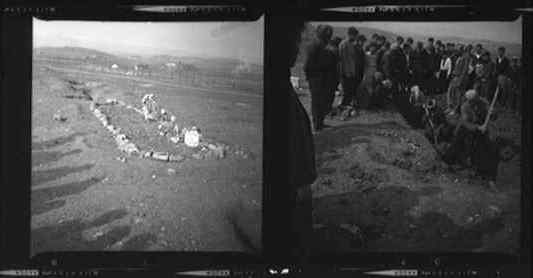 |
| Most people were not informed. They went to their ordinary jobs in the
morning. They were captured and executed on the way to work. They [the army] brought
trucks and started capturing men from thirteen, fourteen to age seventy. They took
thirty thousand people captive. | |
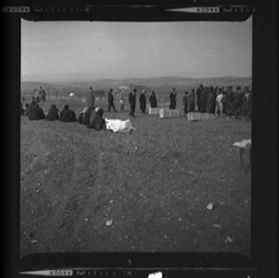 |
| Four teachers [I was friends with] were executed. At first no one
realized that men had been executed at the base. This was discovered [November 1963] after
the fall of the Baath government when an old Kurdish man who baked bread for the Iraqi
army came and told the townspeople about a mass grave near the base. The four teachers
were in this pit. The soldiers put stones around the grave to mark
it. | |
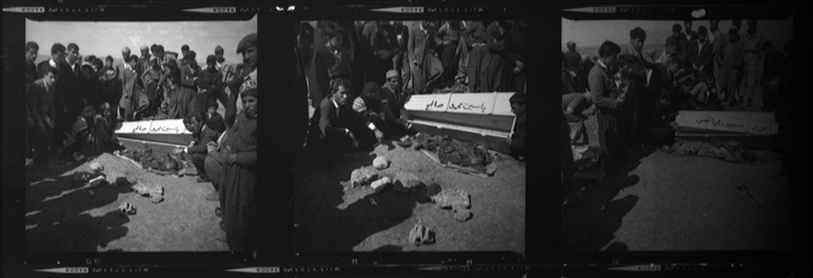 |
| I took a Kodak camera and shot twenty negatives or photos, black and
white. There were ten photos on each roll.
All the relatives of these people and other Sulaimania citizens went to the exhumation.
Yassin Mohammed was recognized because he had a gap between his two front teeth, which
were slightly turned out. | |
| There was one blindfold on one skull but not on the others. You
couldn't tell if the hands were tied.
The second body to come up was Ismael Ibrahim, whose body appears on a pallet, decayed.
They knew it was he because he had keys and a key chain that his wife recognized.
The third to be exhumed was Anwar Dartash. He was recognized by his shoes because the
tops of the shoes were white. | |
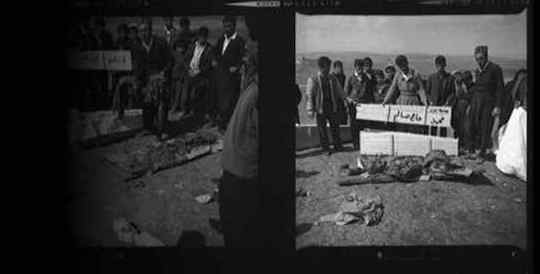 |
| The fourth to come up from the grave was Hamabour Mohammed Haj Saleh.
His father is in a jamadani, standing straight, his son on a pallet, decayed, his head at
his father's feet.
His father said, "I have no photo of me with my son, so please take our picture
together."
Mamosta Ghafoor Amin Abdullah,
Kurdish teacher, living in northern
Iraq,
interviewed by Jemera Rone,
Middle East Watch, August 13, 1992
From the book, Kurdistan,
In the Shadow of History.
| |
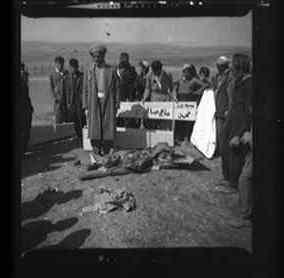 |